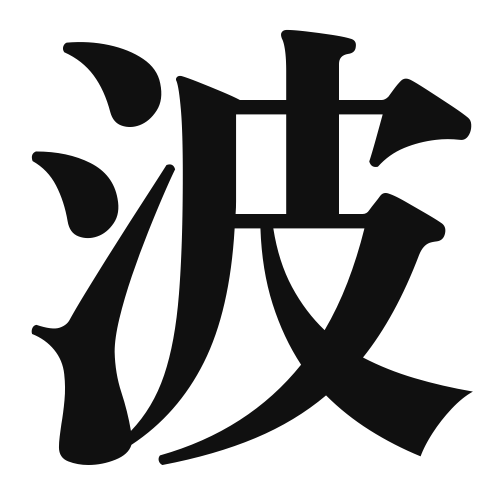1. Overview of Meaning
The kanji “波” (nami) means “wave.” It refers to the undulating movement of water, typically seen in oceans or seas, and can also symbolize fluctuations or changes in various contexts.
2. Formation and Radicals
Formation of the Kanji: The kanji “波” is a phonetic-ideographic character (形声文字). It combines the radical for water (氵) with the phonetic component “波,” which suggests its pronunciation.
Radical: The radical of “波” is 氵, which is related to water, indicating its connection to waves and water movements.
3. Examples of Usage
Common Words and Phrases:
- 波浪 (はろう, harou) – wave (in the context of ocean waves)
- 波動 (はどう, hadou) – wave motion
Example Sentences in Daily Conversation:
- 海の波がとても高いです。 (うみのなみがとてもたかいです。) – The waves in the sea are very high.
- 彼の気持ちは波のように変わります。 (かれのきもちはなみのようにかわります。) – His feelings change like waves.
4. Synonyms and Antonyms
Similar Kanji:
- 流 (りゅう, ryuu) – flow; while both relate to water, “流” emphasizes the movement of water rather than the wave form.
Antonyms:
- 静 (せい, sei) – calm; this kanji represents stillness, contrasting with the dynamic nature of “波.”
5. Cultural and Historical Background
Connection to Japanese Culture: Waves are significant in Japanese culture, often symbolizing change and the transient nature of life. They are depicted in art, literature, and traditional crafts.
Proverbs and Idioms:
- 波風を立てる (なみかぜをたてる) – to stir up trouble; this idiom uses “波” to convey the idea of creating disturbances.
